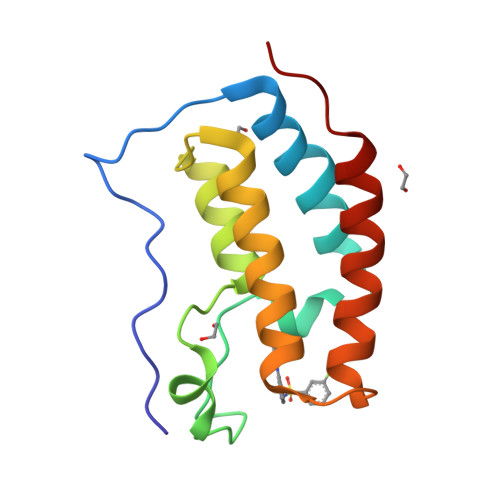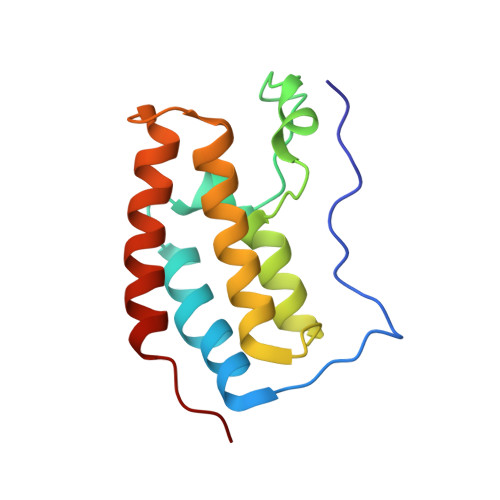Identification of a Novel Class of BRD4 Inhibitors by Computational Screening and Binding Simulations.
Allen, B.K., Mehta, S., Ember, S.W.J., Zhu, J.Y., Schonbrunn, E., Ayad, N.G., Schurer, S.C.(2017) ACS Omega 2: 4760-4771
- PubMed: 28884163
- DOI: https://doi.org/10.1021/acsomega.7b00553
- Primary Citation of Related Structures:
5TI2, 5TI3, 5TI4, 5TI5, 5TI6, 5TI7 - PubMed Abstract:
Computational screening is a method to prioritize small-molecule compounds based on the structural and biochemical attributes built from ligand and target information. Previously, we have developed a scalable virtual screening workflow to identify novel multitarget kinase/bromodomain inhibitors. In the current study, we identified several novel N -[3-(2-oxo-pyrrolidinyl)phenyl]-benzenesulfonamide derivatives that scored highly in our ensemble docking protocol. We quantified the binding affinity of these compounds for BRD4(BD1) biochemically and generated cocrystal structures, which were deposited in the Protein Data Bank. As the docking poses obtained in the virtual screening pipeline did not align with the experimental cocrystal structures, we evaluated the predictions of their precise binding modes by performing molecular dynamics (MD) simulations. The MD simulations closely reproduced the experimentally observed protein-ligand cocrystal binding conformations and interactions for all compounds. These results suggest a computational workflow to generate experimental-quality protein-ligand binding models, overcoming limitations of docking results due to receptor flexibility and incomplete sampling, as a useful starting point for the structure-based lead optimization of novel BRD4(BD1) inhibitors.
Organizational Affiliation:
Department of Molecular and Cellular Pharmacology, Miller School of Medicine, Center for Computational Science, Center for Therapeutic Innovation Miller School of Medicine, Miami Project to Cure Paralysis, Department of Psychiatry and Behavioral Sciences, Miller School of Medicine, and Sylvester Comprehensive Cancer Center, Miller School of Medicine, University of Miami, Miami, Florida 33136, United States.


















